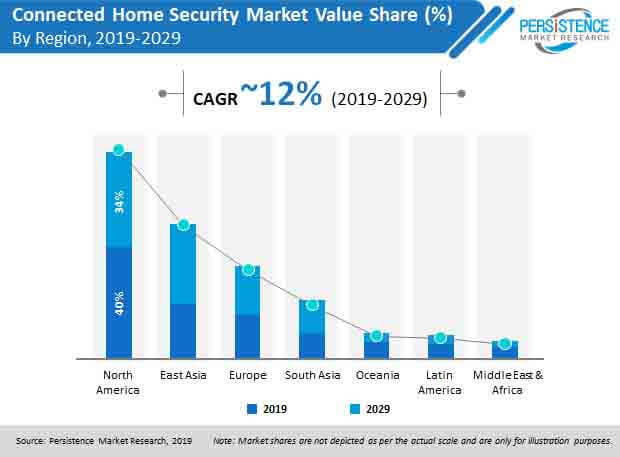Growing End-use Adoption to Fuel Sales of Connected Home Security Market During the Forecast Period – Atlantic Financial Management
Persistence Market Research has released a new market study on the connected home security market, which includes the global industry analysis 2014–2018 and forecast 2019–2029. The global connected home security market was valued at ~ US$ 300 Mn in 2014, and is expected to surpass US$ 400 Mn by the end of 2019. The connected home security market is expected to grow at a CAGR of ~ 12% between 2019 and 2029, and is estimated to reach a global value of ~ US$ 1.4 Bn by the end of 2029.
The report on the global connected home security market contains vital macroeconomic and forecast factors that are estimated to drive the growth of the global connected home security market. The report on the connected home security market also discusses the restraints that are expected to hamper the global market, along with potential opportunities and latest trends in the market across the value chain.
Get going with sample of connected home security market report! https://www.persistencemarketresearch.co/samples/29833

Emergence of IoT Devices to Boost the Connected Home Security Market
By component, the global connected home security market is segmented into software/platform and services. However, services in connected home security can be further divided into integration & deployment, training & consulting, and maintenance & support. Moreover, software/platform in connected home security can enable users to protect their smart devices from various type of viruses and malwares.
On the basis of the connected device, the connected home security market is segmented into smart TVs, smart thermostats, smart speakers, smart locks, internet security cameras, and other connected devices. The internet security cameras segment is estimated dominate the global market owing to an emerging awareness regarding security threats across the globe. The inherent aim behind the installation of connected home security is to provide safety to smart home devices. Therefore, many companies are shifting towards adoption of cybersecurity solutions to secure connected homes devices on the cloud without the risks of cyber threats.
The market analysis based on application reveals the key application…

